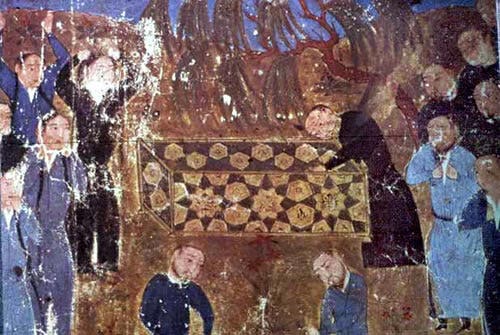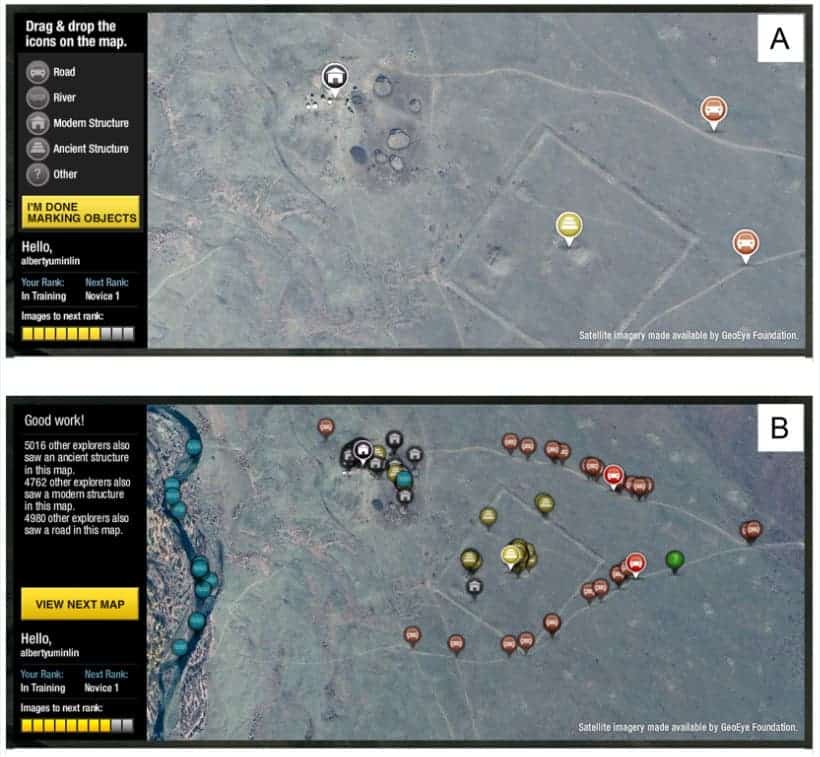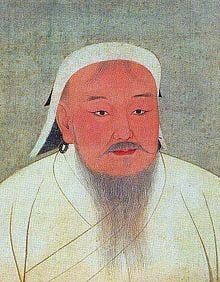
Although Genghis Khan’s memory lives to this day, the circumstances of his death are still shrouded in mystery after 800 years. There are many legends surrounding the cause of the Khan’s untimely death, from blood loss following a stab wound to injuries sustained after tumbling from his horse. But a new study suggests that it was, in fact, the bubonic plague that ultimately got to the fearsome conqueror.
Slave or emperor, they’re all the same to the plague
Genghis Khan, known in Mongolia as Chinggis Khaan and born under the name Temüjin, built the greatest empire the world has ever seen from the ground up. Stretching from East to West, the Mongol Empire was roughly 2.5 times larger than the Roman Empire, ruling over everything between the Pacific Ocean and the Caspian Sea.
The warrior-ruler’s death is highly controversial, to say the least. On the one hand, you have enemies who have an interest in spreading negative propaganda while on the other hand, you have followers keen to embellish events and hype up a character to legendary heights.
According to Wenpeng You, a researcher of human biology at The University of Adelaide in Australia, Genghis Khan was at the height of his political power when he died. Speaking to Live Science, the researcher went on to say that Genghis Khan was generally well-loved by his underlings and servants. “This makes his death by political assassination or poisoning very unlikely.”
In order to determine the Khan’s likely cause of death, the researchers familiarized themselves with the most common disease that Mongol troops, as well as their enemies, had to endure in those Medieval times.
However, their most important source is The History of Yuan, one of the official Chinese historical works known as the Twenty-Four Histories of China, commissioned during China’s Ming dynasty in 1370 — so nearly 150 years after the Khan’s death. According to the ancient book, between August 18 and August 25, 1227, Genghis Khan fell ill while campaigning against the Western Xia. Within eight days of disease onset, whose symptoms included fever, the Khan died.
Previously, other researchers suggested that Genghis Khan died of typhoid fever. But Francesco Galassi, a physician, and paleopathologist at Flinders University in Adelaide notes that there was no mention of other defining symptoms of typhoid fever, such as abdominal pain and vomiting.
Instead, Galassi and colleagues determined that Genghis Khan’s documented symptoms most closely match those of the bubonic plague, one of the deadliest diseases in the history of mankind.
The bubonic plague, also known as the ‘Black Plague’, caused three great pandemics in 541, 1347, and 1894 CE, each time causing devastating mortality of people and animals across nations and continents. In the period 1347 to 1350, the Black Death killed a quarter of the population in Europe, over 25 million people, and another 25 million in Asia and Africa. The devastation was so great that Europe’s population didn’t recover to pre-pandemic levels until the 16th century.
But the plague, which is caused by an extraordinarily virulent, rod-shaped bacterium called Yersinia pestis, has always been infecting humans on a smaller scale between pandemics. And the great Genghis Khan may have been one of its many victims.
“Instead of spectacular, highly sophisticated or even more logically acceptable interpretations (e.g. typhus) of Genghis Khan’s cause of death, the reported clinical picture and the duration of the disease, particularly given the general circumstances of the disease gripping his army as early as 1226, suggest a more reasonable conclusion and retrospective diagnosis, that of plague, a most ancient, history-changing and still present disease,” the authors wrote in the International Journal of Infectious Diseases.
The search for the Khan’s tomb
Granted, such retrospective analyses are prone to error after all this time. We will never know for sure what killed Genghis Khan unless we somehow analyze his remains, and that will probably never happen.

According to a gruesome legend, the Khan asked to be buried without any distinctive markings, so the funeral escort went to great lengths to conceal the tomb. The slaves who built the tomb were massacred, then the soldiers who escorted them were also killed, such that only a few people with information about the tomb remained. They likely took it with them to their grave.
“At the time of Khan’s demise, according to Mongolian culture, kings’ corpses retained their divine power after death, hence their remains were buried in unmarked, highly protected and impracticable places, particularly on the mountains where they were thought to be closer to their final destination: heaven. Other burial options included inhuming the monarch’s body in a pit secretly dug in a field, or the corpse might even be cremated,” the researchers in Australia wrote.
Most experts believe Khan was buried somewhere near his birthplace in Khentii Aimag, northeastern Mongolia, and that his descendants may be buried there along with him— there isn’t much more to go on than that.
Not all is lost, though. In 2015, Albert Yu-Min Lin from the University of California, San Diego, set up a citizen science project in which anyone can contribute by tagging potential burial sites for Genghis Khan in satellite images. Tens of thousands of people have contributed thus far, resulting in dozens of potential archaeological sites. Even if Genghis Khan’s tomb is never found, who knows what incidental archaeology might arise from this quest.





